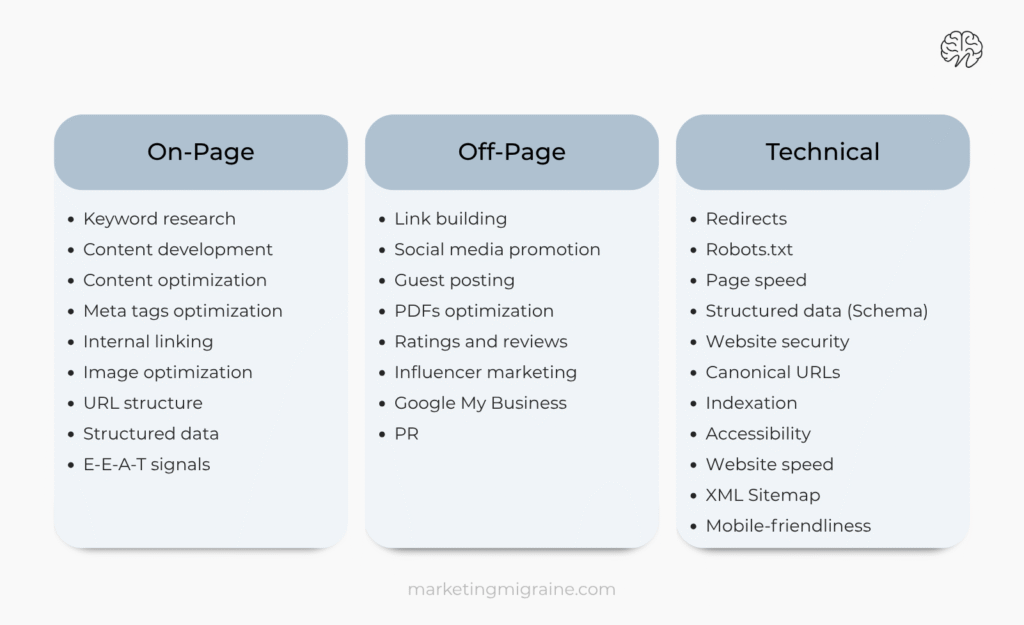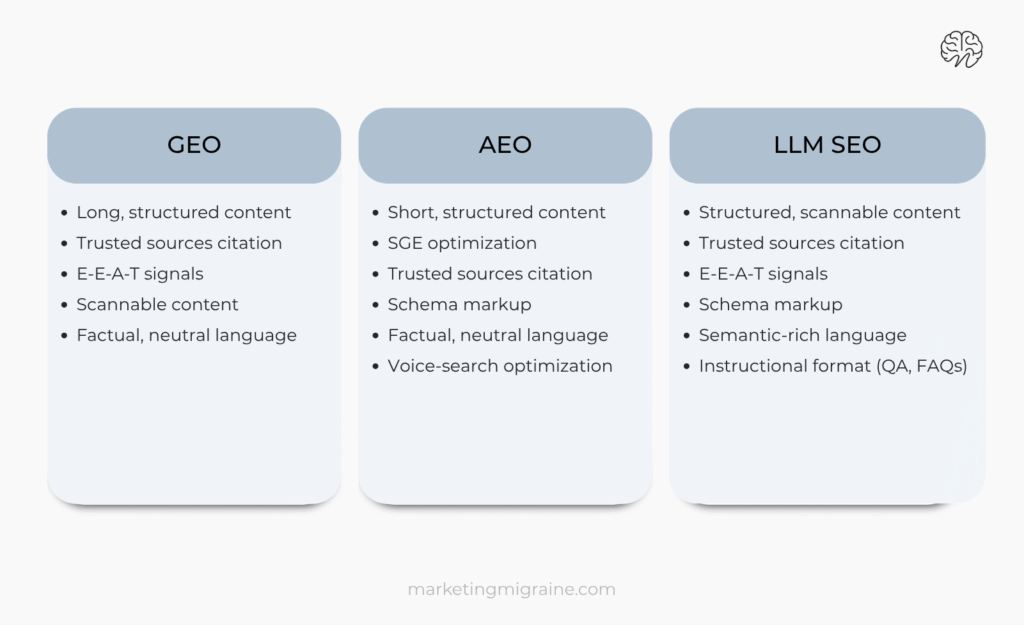7 SEO Types To Supercharge Your Visibility
In the traditional sense, SEO is all about optimizing a website so it appears in search results of search engines. It’s really just a set of processes like using the right keywords, writing catchy titles, and descriptions, getting other sites to link to yours, and making sure your pages load fast.
But SEO has evolved. It’s no longer just about ranking on Google or Bing. Today, different SEO types exist to help brands become discoverable wherever people search for information.
Table of Contents
What SEO Types Are There?
Think about how you search for information today. You don’t just “Google it” anymore. Sometimes you watch product reviews on YouTube, browse Pinterest for inspiration, ask ChatGPT for quick answers, or read a full website article before making a decision.
The key is to understand not only what your audience is looking for, but also where they’re searching. Whether it’s a website, a social channel, or an AI platform, discovery is no longer limited to search engines.
As long as there’s a search function, SEO should always be part of the digital strategy. That’s why it’s so important to understand how both traditional and modern SEO can help increase online visibility.
Traditional SEO Types

So, what is traditional SEO?
Well, it’s the foundation of search engine optimization as we first came to know it. It’s all about making websites more visible on search engines like Google or Bing.
Traditional SEO can be divided into 3 main categories: on-page, off-page, and technical, each playing a unique role in how search engines interpret and rank the content.
On-Page
Simply put, on-page SEO refers to everything that’s on a webpage: the keywords you want to target, the content you want to write, how you want to organize the content, how you want the URL to look, what other pages you would like to promote within your content, etc.
This means that you need to conduct keyword research, write good-quality content, have short and persuasive meta titles and descriptions, make sure that the content is well-organized and have all the relevant internal links in place.
Off-Page
Off-page SEO is all about external signals that build a website’s credibility and authority. It includes promoting content on social media, gathering customer reviews, setting up a Google Business Profile, and earning backlinks from reputable websites.
In short, off-page SEO focuses on external factors that influence how search engines rate a website’s trustworthiness and relevance. The more positive reviews you get, the more people talk about your brand, and the more quality sites link back to you, the stronger your off-page SEO becomes.
Technical
Technical SEO refers to behind-the-scenes fixes: fast-loading pages, mobile-friendly layouts, secure connections (HTTPS), and clean site structure so search engines can understand the website, and crawl it without issues.
Social SEO
Although social SEO typically falls under the off-page umbrella, it absolutely deserves its own spotlight. Many in the industry still overlook the importance of optimizing content for social, but with 78% of global users researching products and brands on social media, social SEO is more important than ever.
These days, social media platforms like Instagram, TikTok, YouTube, and even LinkedIn are acting like search engines. Users type in queries, hashtags, and keywords to discover content, products, and solutions, sometimes without even turning to traditional search engines. And this method is often preferred among younger generations like GenZ and millennials.
Modern SEO Types

GEO
GEO stands for generative engine optimization. In other words, it’s all about getting a content piece featured in AI-enhanced search responses, including Google’s own search generative experience (SGE), or Bing’s AI answers.
GEO summarizes content in answer outputs. And sure, while some think that this will make users less likely to visit a website, since the answer is already there, that’s not always the case. In fact, content optimized for GEO can gain up to 40% more visibility in AI-generated responses, according to a recent study.
When content is cited, referenced, or linked in AI-generated responses, it helps build brand authority and attract qualified traffic — especially from users who want more context than what the AI provides at first glance.
AEO
AEO, on the other hand, stands for answer engine optimization. It’s more about structuring content so that AI assistants like ChatGPT, Gemini, and Perplexity, can easily understand and recommend it to users.
Using clear, factual language, being mentioned on forums or official sites, and adding schema markup help AI tools to get relevant information and display it when users ask a question. If your pages use structured data, then you’ve got a better shot at showing up in featured snippets or rich results — and that can also get you noticed in AI-generated answers on search results pages.
LLM SEO
LLM SEO (large language model SEO) is the practice of optimizing content so it can be understood and recommended by AI systems. It takes a broader, more strategic approach that recognizes the growing role of AI in delivering answers to users.
In short, LLM SEO builds on the foundations of traditional SEO, GEO, and AEO.
Everything is SEO
Now, don’t stress about the different types of SEO. They may have different names and focuses, but at the end of the day, it’s all just SEO. As long as you’ve got the core basics covered, you’re already on the right track… no matter which platform you’re trying to show up on.